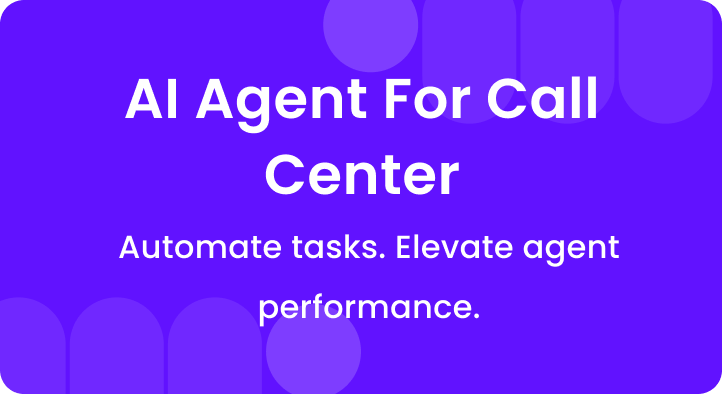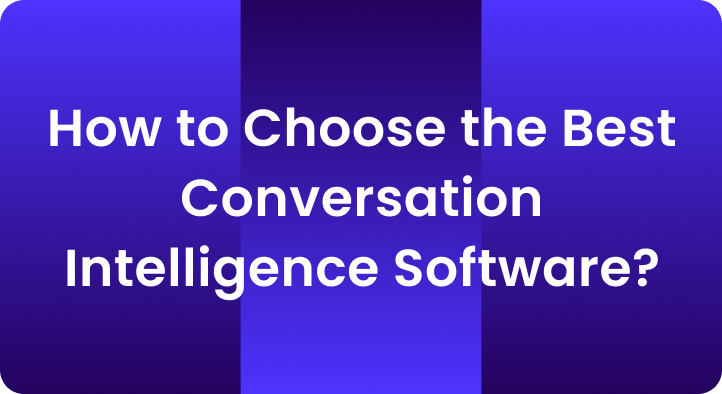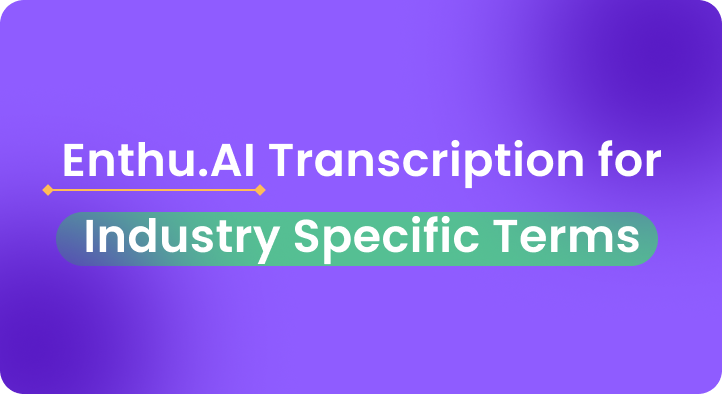In an era where every second counts, few things frustrate customers more than long hold times.
According to research, the average person may spend up to 43 days of their life on hold.
This not only wastes valuable time for callers, but also hampers the efficiency of call center agents.
The result is an unhappy customer base and missed opportunities for businesses.
Fortunately, with the right strategies, technologies, and agent training, it’s entirely possible to reduce hold time in call centers and create more positive, productive interactions.
In this article, we’ll explore what hold time is, why it matters, how it’s calculated, and how it impacts both customer satisfaction and operational success. We’ll also share practical, data-driven tips to help you minimize hold time and elevate the overall customer experience.
Upload Call & Get Insights
 DOWNLOAD DUMMY FILE
DOWNLOAD DUMMY FILE A. What is hold time in call centers?
Hold time is the time a customer is on hold once they connect with an agent, but before they receive assistance. It is different from wait time (the time spent waiting in the IVR queue) and is different from average handle time (AHT), which encompasses the full interaction.
In simple: it’s the “please hold” moment. The clock starts the second an agent presses the hold button and stops when they return.
Why does it matter? Because those minutes seem longer than they really are. Customers don’t know if you’re checking a system and talking to a supervisor, or worse, you’re just leaving them and doing nothing. All they know is the issue hasn’t been resolved yet.
Imagine this: a customer calls about a billing error. The agent doesn’t have the answer handy, so they say, “Let me check with finance, I’ll just put you on hold.” The customer stares at the phone, silence humming in their ear, frustration growing with every tick. That waiting time? That’s your hold time.
B. Why hold time matters more than you think
On paper, hold time looks like just another call center metric. But in reality, it’s one of the strongest signals of how customers feel about your service. Long holds don’t just stretch out a call, they ripple across the entire customer journey.
1. Impact on Customers
Customers call because they want answers now, not later. A long hold tells them their issue isn’t a priority. Frustration builds, and it often sounds like:
- “I’ve already been waiting — why can’t anyone just fix this?”
- “Do they even care about my time?”
Research backs this up: more than 70% of customers say long holds are the most irritating part of calling customer service. And irritated customers rarely leave happy.
2. Impact on Agents
Agents aren’t fans of holds either. They can feel stuck helping the customer in a short amount of time versus adhering to internal processes.
Oftentimes, when the call starts with an irate customer who has been on hold for too long, there is little to no patience when the call starts, thus the conversation becomes defensive before it even starts.
The detriment of that stress on morale and performance is real.
3. Impact on the Business
High hold times add hidden costs:
- Lower CSAT and NPS scores
- More repeat calls from customers who didn’t get a resolution the first time
- Longer average handle time, since agents spend part of the call de-escalating frustration
In short, every extra minute of hold time chips away at loyalty, efficiency, and revenue.
C. 6 Tips to reduce average hold time
Improving call center efficiency, boosting customer satisfaction, and decreasing agent burnout often comes down to reducing hold time.
Below are six proven strategies you can implement to keep hold time at bay and enhance overall call center performance:
1. Streamline call routing
- Use intelligent IVR: Interactive voice response can direct callers to the right queue before they speak to a live agent. This ensures that only agents with the necessary expertise receive specialized calls.
- Leverage skill-based routing: Direct calls to the most qualified agent based on skills, certifications, or product knowledge. This reduces the need for transfers or lengthy holds while agents seek help.
2. Staffing and resource allocation
- Schedule smartly: Many call centers rely on historical data to predict busy periods. By scheduling more agents during peak hours, you can reduce the hold time that results from high call volumes.
- Adopt a flexible staffing model: Consider part-time or seasonal workers to handle fluctuations in demand. Adjust staffing quickly when call volumes are unexpectedly high.
3. Encourage self-service options
- Implement chatbots: For basic inquiries such as order status or password resets, chatbots or automated knowledge bases can solve problems without involving a live agent. This leaves agents free to handle more complex calls and reduces queue times.
- Offer intuitive online portals: Customers appreciate an online help center or easy-to-navigate website for simpler issues. The more they can do themselves, the fewer calls come into your center.
4. Continuous monitoring and reporting
- Track real-time metrics: Keep an eye on average hold time, call abandonment rates, and service levels in real time. If you see a sudden spike in hold times, you can take immediate corrective measures.
- Analyze conversation intelligence: Tools that offer speech analytics and call monitoring allow supervisors to identify where agents struggle. By spotting recurring issues, you can update training or resources to cut down hold times.
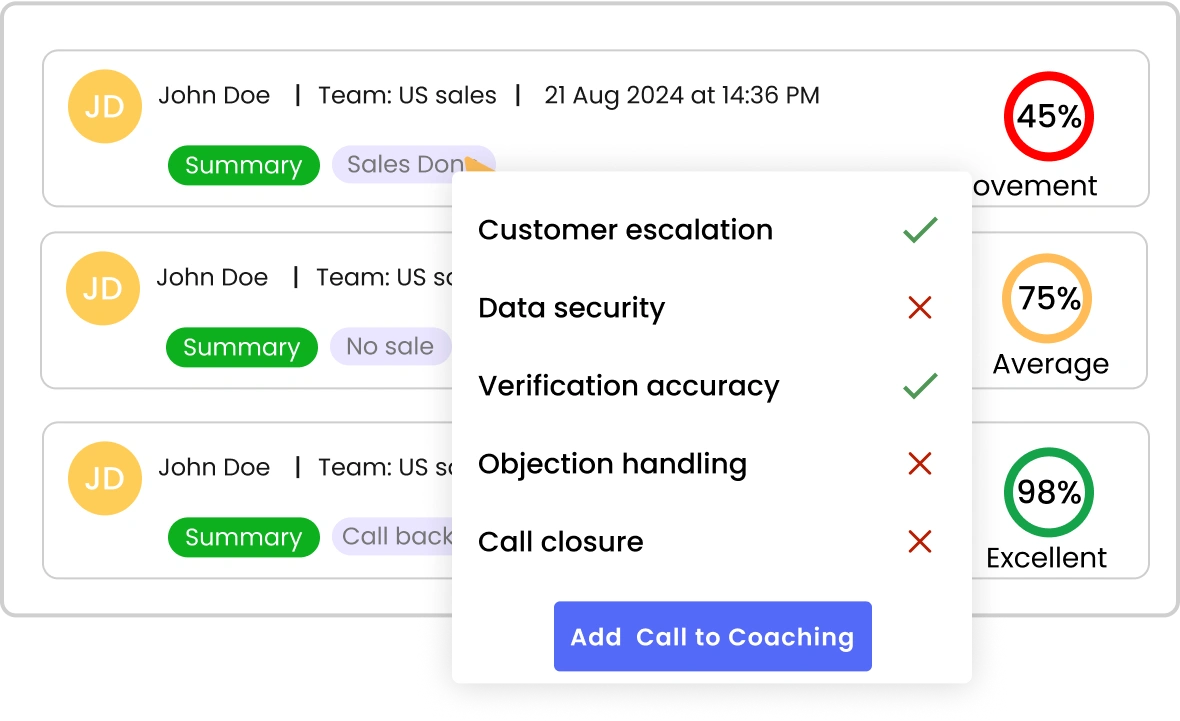
5. Training and skill development
- Invest in quality onboarding: A well-trained agent can respond to queries swiftly and with confidence, reducing the need to place callers on hold. Thorough training can also lower the number of escalations.
- Ongoing sales coaching and mentoring: If agents feel prepared to answer diverse questions about products and services, they’re less likely to need assistance mid-call. Periodic refreshers and advanced training modules (like speech analytics for real-time guidance) are especially helpful.
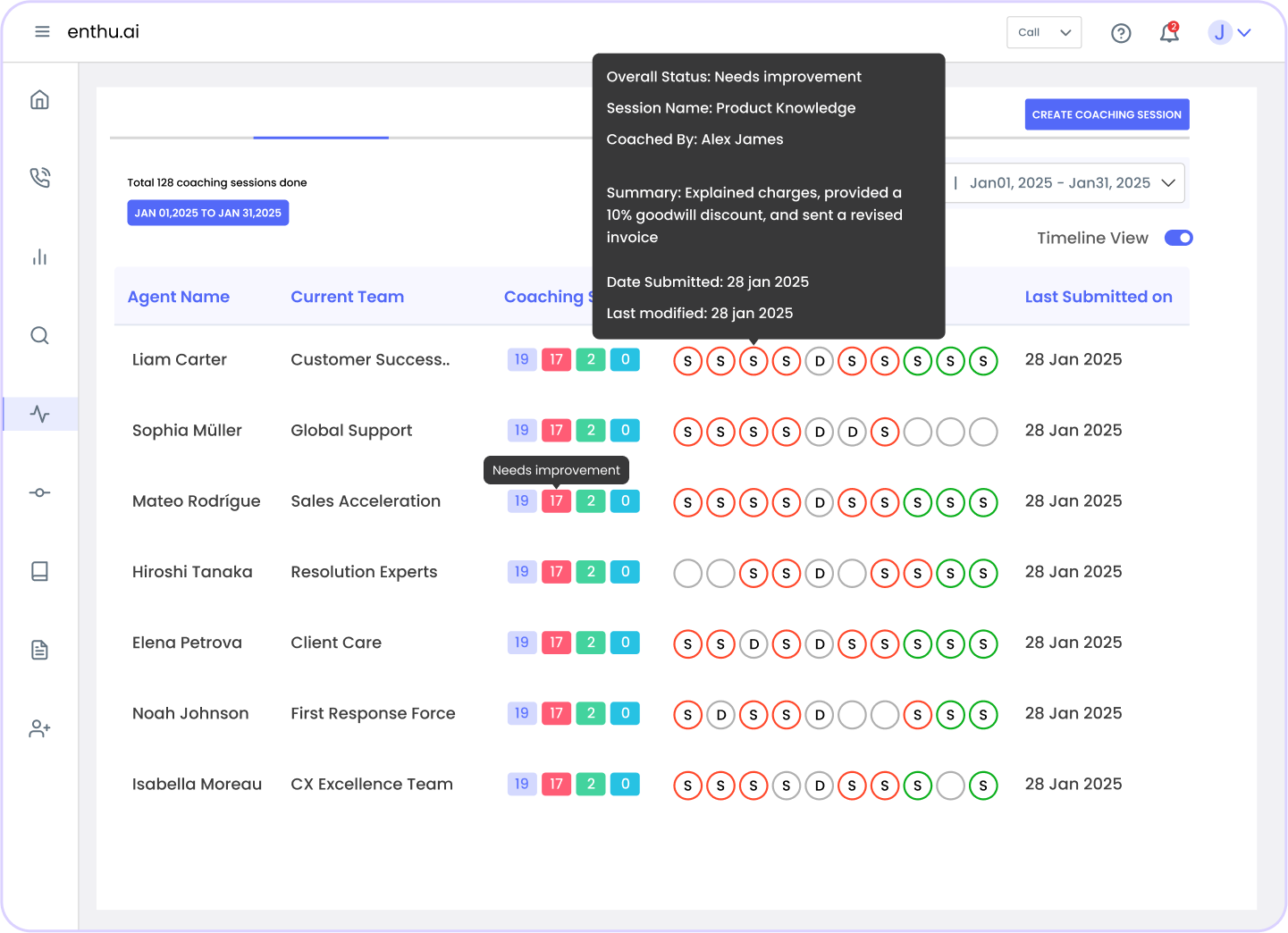
6. Feedback and surveys
- Collect customer feedback: After each call, gather feedback through post-call surveys. Ask customers if they were placed on hold too often or for too long.
- Close the loop on survey data: Use these insights to refine processes and address recurring obstacles. If many customers complain about agents searching for information, it’s likely time to update your knowledge base or invest in better resources.
D. How to calculate average hold time in a call center
To find the average hold time, you need two numbers
- The total time (in seconds or minutes) that callers spent on hold during a given period (such as a week or a month).
- The total number of inbound calls that agents answered during that same period.
Use the following formula:
For example, imagine your call center had a cumulative hold time of 120,000 seconds over the course of one month. If there were 3,000 inbound calls answered in that same month, then:
120,000 seconds ÷ 3,000 calls = 40 seconds of hold time per call
To decide whether this number is acceptable, you might compare it against historical data from previous months, industry benchmarks, or objectives set by your organization.
Some organizations strive to adhere to the 80/20 rule, meaning 80% of calls are answered within 20 seconds. However, it’s important to remember that every industry and business model has different standards, and hold time expectations can vary widely.
Generally, you’ll want to keep an eye on several call center metrics & customer service metrics in conjunction with average hold time:
- Call abandonment rate: How many people hang up before speaking to an agent or while on hold
- First call resolution (FCR): how often issues are resolved on the first call
- Average handle time: Total talk time plus hold time and after-call work
- Customer satisfaction (CSAT): Direct feedback from callers regarding their experience
By monitoring these metrics together, you can more effectively identify when hold time is becoming a problem and take the necessary steps to address it.
E. What is the impact of hold time on customer experience?
Hold time is not just a minor inconvenience; it can significantly influence customer perception, loyalty, and willingness to continue doing business with a company.
According to HubSpot, “Approximately one-third of customers are most frustrated by being placed on hold, and another third dislike having to repeat their issues to multiple support representatives.”
Here’s a closer look at several effects of excessive call center hold time:
1. Negative brand perception
When callers sit on hold longer than they expect, they often transfer that frustration directly onto the brand.
This can lead them to speak negatively about their experience to friends, family, or on social media.
According to some reports, Americans are unhappy with the service and are not afraid to let people know about it.
2. Higher abandoned call rates
Long hold times are a leading cause of abandoned calls — that moment when a caller decides enough is enough and hangs up.
Research suggests that 67% of people have hung up the phone in frustration when they cannot reach a customer service representative
An increase in abandoned calls is a critical red flag since it prevents agents from providing assistance and can reduce customer satisfaction.
3. Lost revenue opportunities
Excessive hold times may directly reduce sales. In some sectors, a caller on hold may very well be a potential buyer seeking more information or trying to complete a purchase.
If they get frustrated and hang up, you lose that sales opportunity.
According to Zendesk Benchmark data, “73% of consumers consider switching brands immediately after poor customer service, and 50% will consider switching after only one bad experience.”
4. Increased customer irritation
Putting a customer on hold is never ideal, but it becomes a genuine problem if the hold is repeated or lasts for many minutes. Extended customer wait times can intensify the customer’s emotions.
When an agent finally returns, they’re likely dealing with someone who is already irritated, making it more challenging to achieve a positive outcome.
This emotional friction can even affect overall call handling time, as an agent may need extra minutes to calm the caller down.
F. Understanding average hold time and its impact on call center success
Beyond just being a number on a dashboard, average hold time is a barometer of your call center’s overall health. It’s inherently tied to essential performance metrics such as first call resolution, average handle time, and CSAT scores. Here’s how it fits into the bigger picture:
1. Operational efficiency
High average hold time often implies bottlenecks in agent knowledge or system accessibility. The more time agents spend on hold, the less time they’re actively assisting customers. This impacts both productivity and labor costs.
2. Customer satisfaction
Many customers interpret long hold times as disrespect for their time. By contrast, a consistently low hold time reflects a company culture committed to quick resolutions and seamless customer journeys. Customers who feel valued are more likely to stay loyal.
3. Agent morale and retention
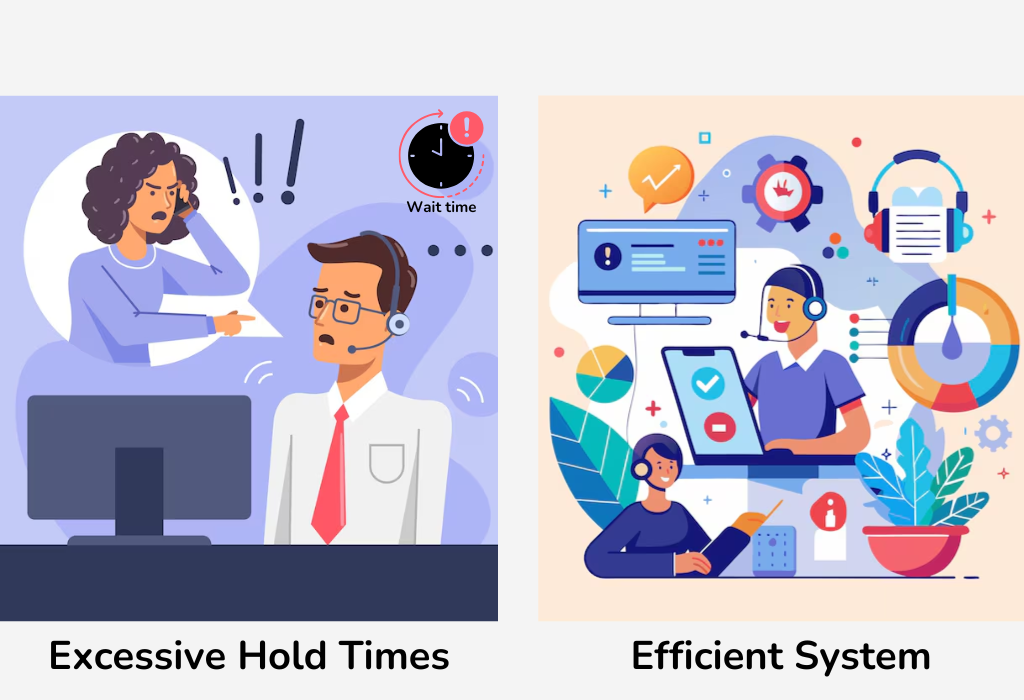
Excessive hold times can affect agents, too. Fielding calls from irritated customers can lead to burnout.
Conversely, a system that efficiently connects the right customers to the right agents helps employees feel more competent and supported.
4. Call center metrics synergy
Call centers typically track multiple metrics, including Net Promoter Score (NPS), average speed to answer, and CSAT. These metrics work in tandem. If your average hold time is consistently high, it may cause your abandonment rate to rise and your CSAT to dip. Tracking these metrics holistically allows managers to implement timely interventions.
5. Competitive advantage
In highly competitive industries such as telecom, financial services, and ecommerce, a faster, more streamlined service can differentiate you from competitors. When your center minimizes hold times while providing high-quality service, it becomes a strong selling point that boosts customer retention and referrals.
G. Kick start your experience with Enthu.AI today!
Reducing hold time in call centers can seem like a tall order, but modern solutions like enthu.ai make this challenge more manageable than ever before.
By leveraging conversation intelligence and advanced speech analytics, enthu.ai provides deep insights into common customer concerns and patterns that lead to extended hold times.
You can also monitor calls in real time and use quality assurance tools to detect when agents are struggling.
Here’s how enthu.ai helps:
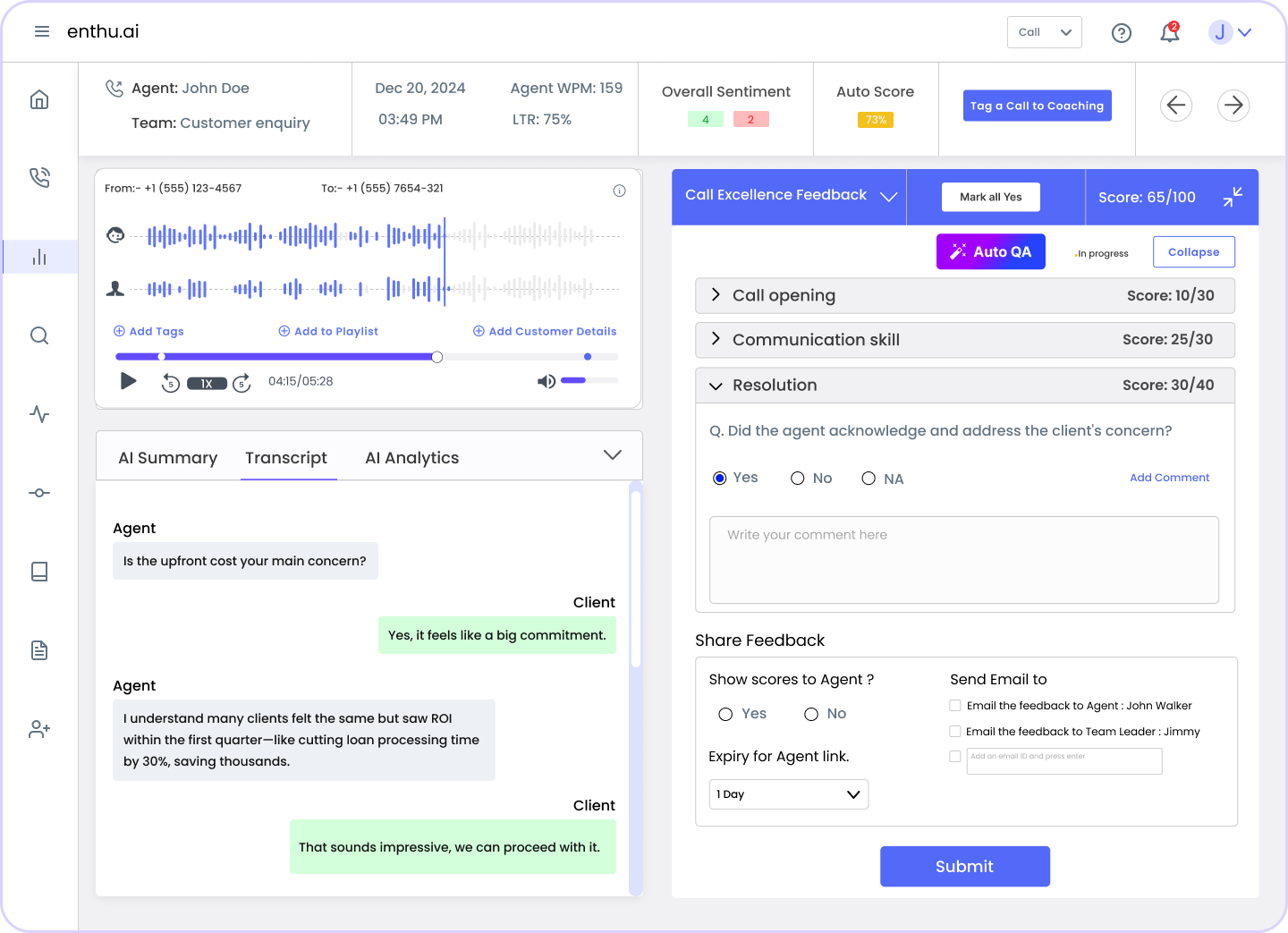
1. Automated transcription and analysis
With near-instantaneous transcription, call data becomes searchable. Supervisors can quickly identify the points in a conversation that result in a hold.
2. Real-time monitoring and analytics
Managers see live metrics on hold times, allowing them to step in proactively if trends start climbing. Real-time data also helps with staffing decisions on the fly.
3. Performance metrics and reporting
Enthu.ai offers comprehensive dashboards that track average hold time, agent performance, and more. Equipped with this data, managers can create targeted strategies and refine workflows.
4. Agent training and coaching
Thanks to robust insights on agent-customer interactions, supervisors can design laser-focused training programs. Topics may include quicker knowledge retrieval, better communication skills, or advanced sales training and coaching — all of which reduce hold time.
5. Intelligent routing
By integrating with existing systems, enthu.ai can support advanced routing strategies. This ensures that calls land with agents best suited to solve the issue immediately, lowering the chance of multiple holds.
These features align perfectly with the goal of minimizing hold time while maintaining a high level of customer service. When you adopt an AI-powered call center software like enthu.ai, you empower agents to handle calls more effectively while giving managers the data and flexibility they need to streamline processes.
Conclusion
Long hold times don’t just waste moments; they can erode a brand’s reputation, hike up call abandonment rates, and leave employees overwhelmed by frustrated callers.
Fortunately, by focusing on strategies such as skill-based routing, comprehensive training, and real-time monitoring, contact centers can keep hold times in check.
Tools like enthu.ai go even further, providing sophisticated insights and automation that free up agents to do what they do best: deliver exceptional customer service.
The best-performing call centers see hold time not merely as a standalone metric, but as part of a broader commitment to continuous improvement.
By regularly reviewing average hold time in tandem with CSAT, abandonment rates, and first call resolution, managers can craft a data-driven path toward efficiency. In the modern marketplace, where callers expect swift and empathetic assistance, reducing hold time is a key differentiator that boosts both loyalty and revenue.
FAQs
1. What is the meaning of hold time?
Hold time refers to the length of time a caller remains on the line once an agent places them on hold. This occurs after initial contact has been made, and the agent needs a temporary pause in the conversation to find resources, consult a supervisor, or perform a necessary task.
2. How to calculate hold time in a call center?
To calculate average hold time, first sum up the total number of seconds or minutes that callers spend on hold during a specific period. Then, divide that total by the number of inbound calls answered in the same timeframe. The resulting figure is your average hold time.
3. What is a good average hold time for a call center?
There is no universal benchmark for a “good” average hold time, as it varies by industry and company goals. Many call centers strive for the “80/20 rule,” answering 80% of calls within 20 seconds. Still, it’s essential to compare your average hold time against your own historical data, industry standards, and related metrics like call abandonment rates.
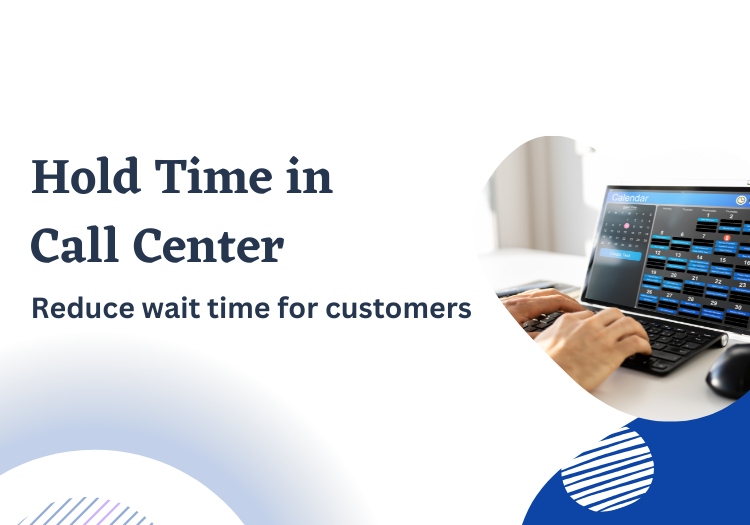


 On this page
On this page